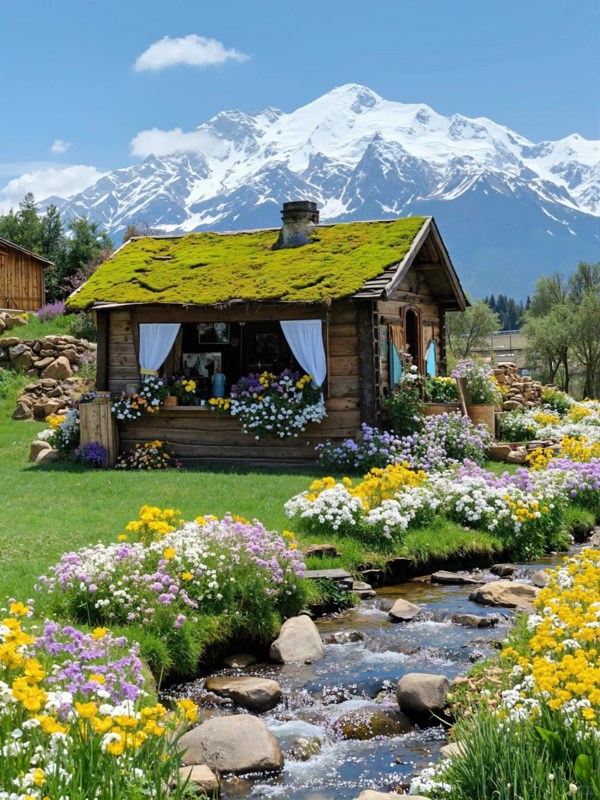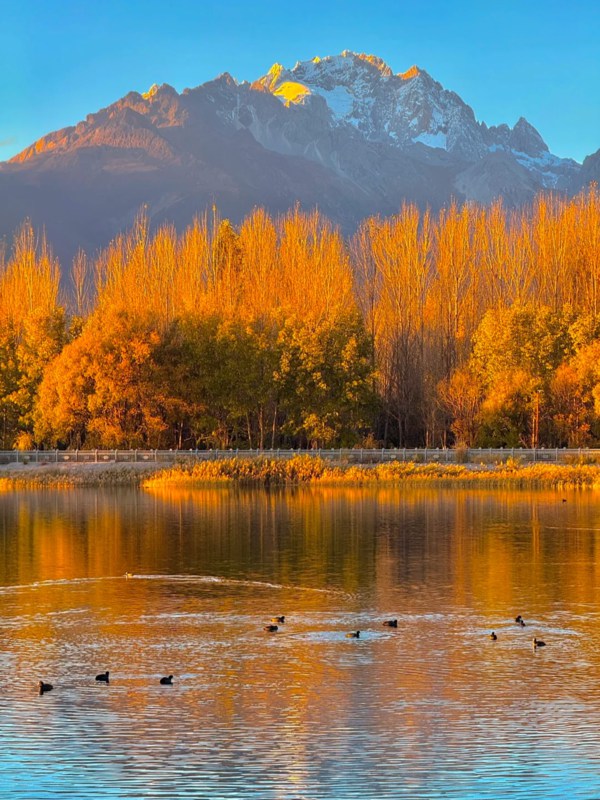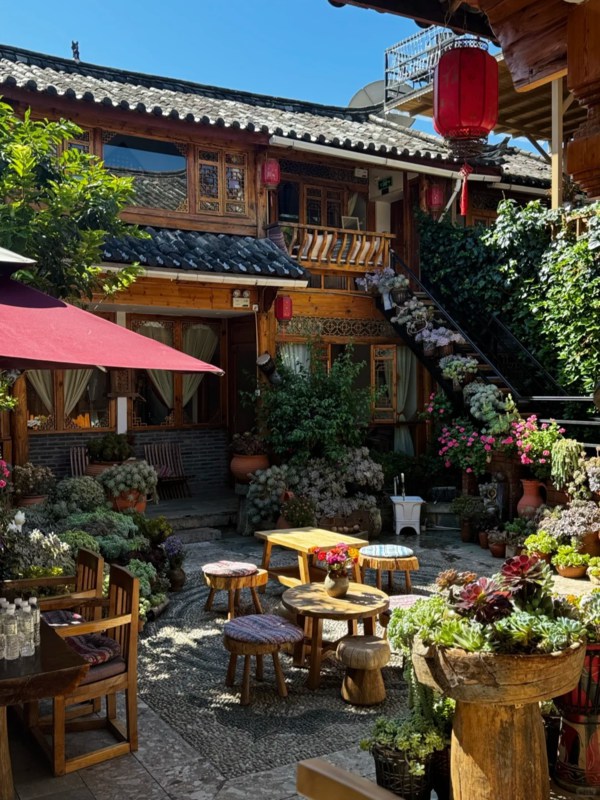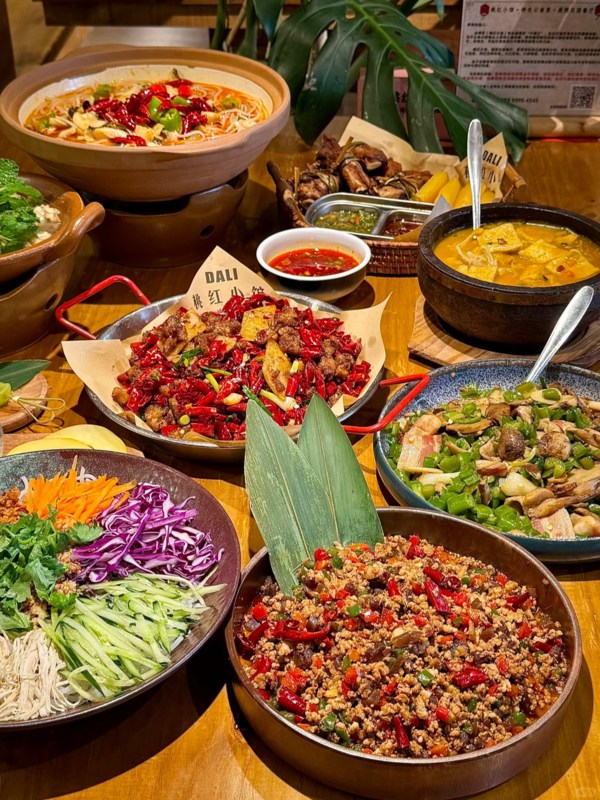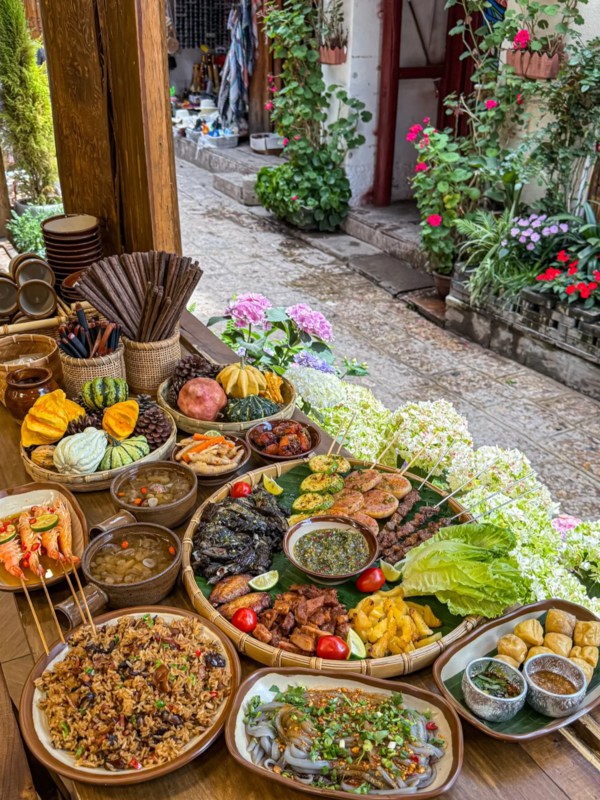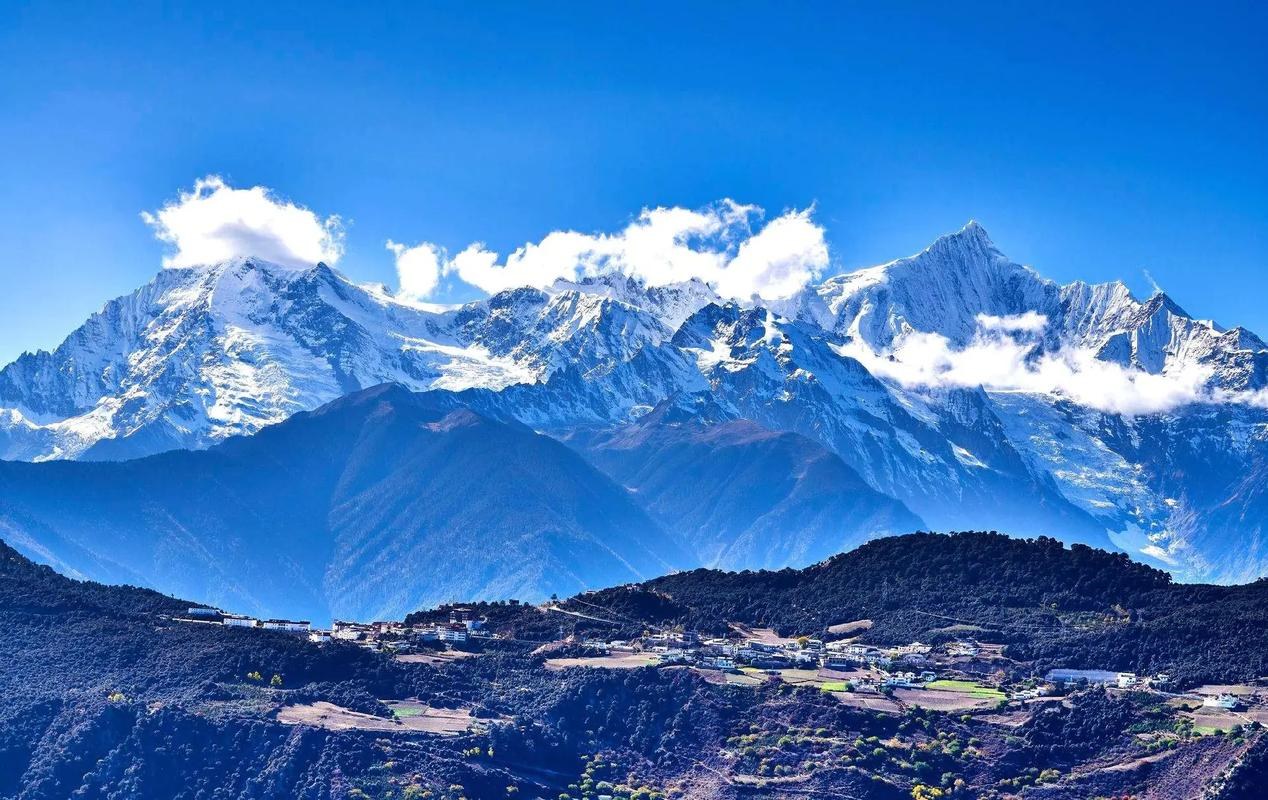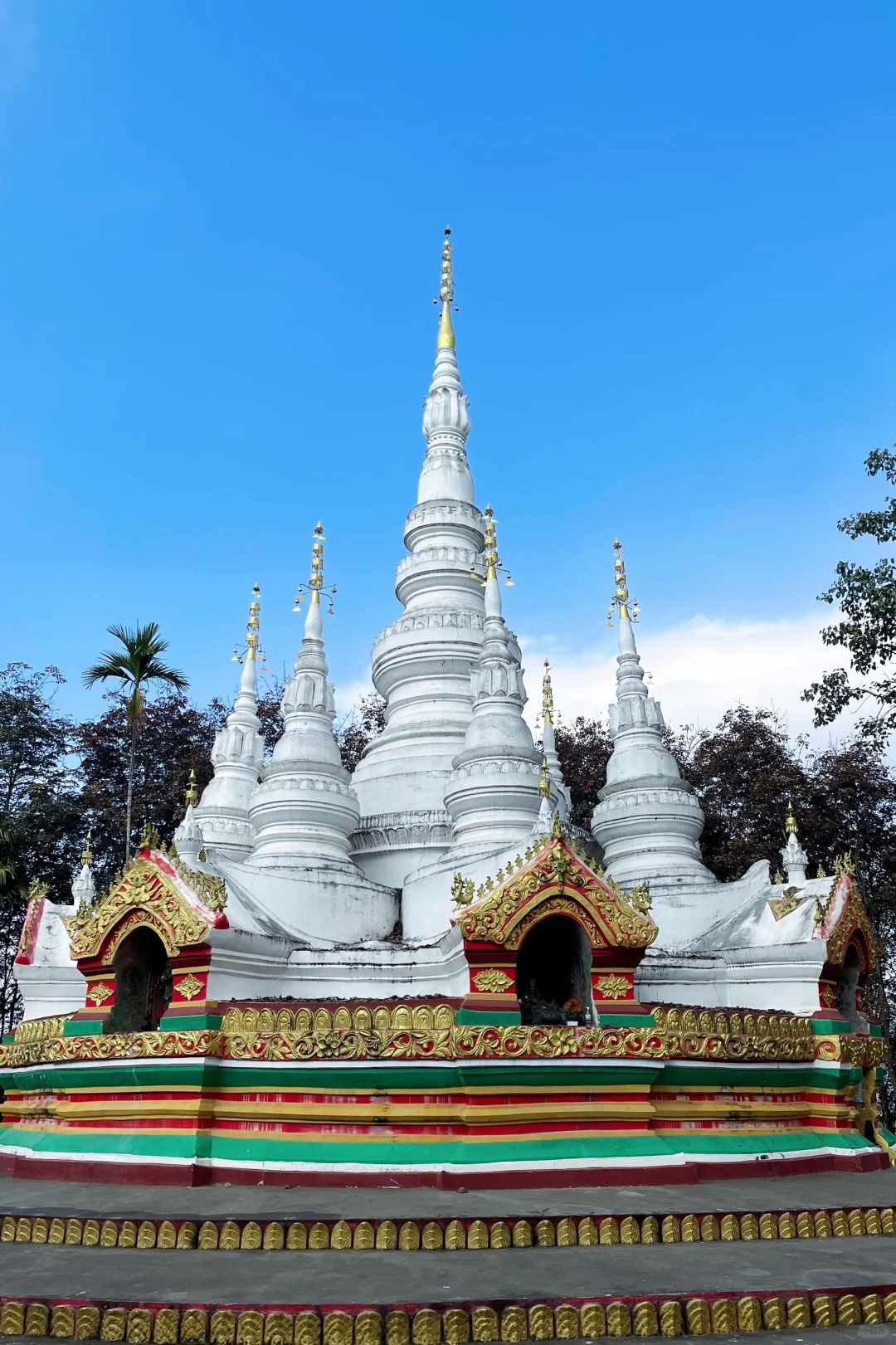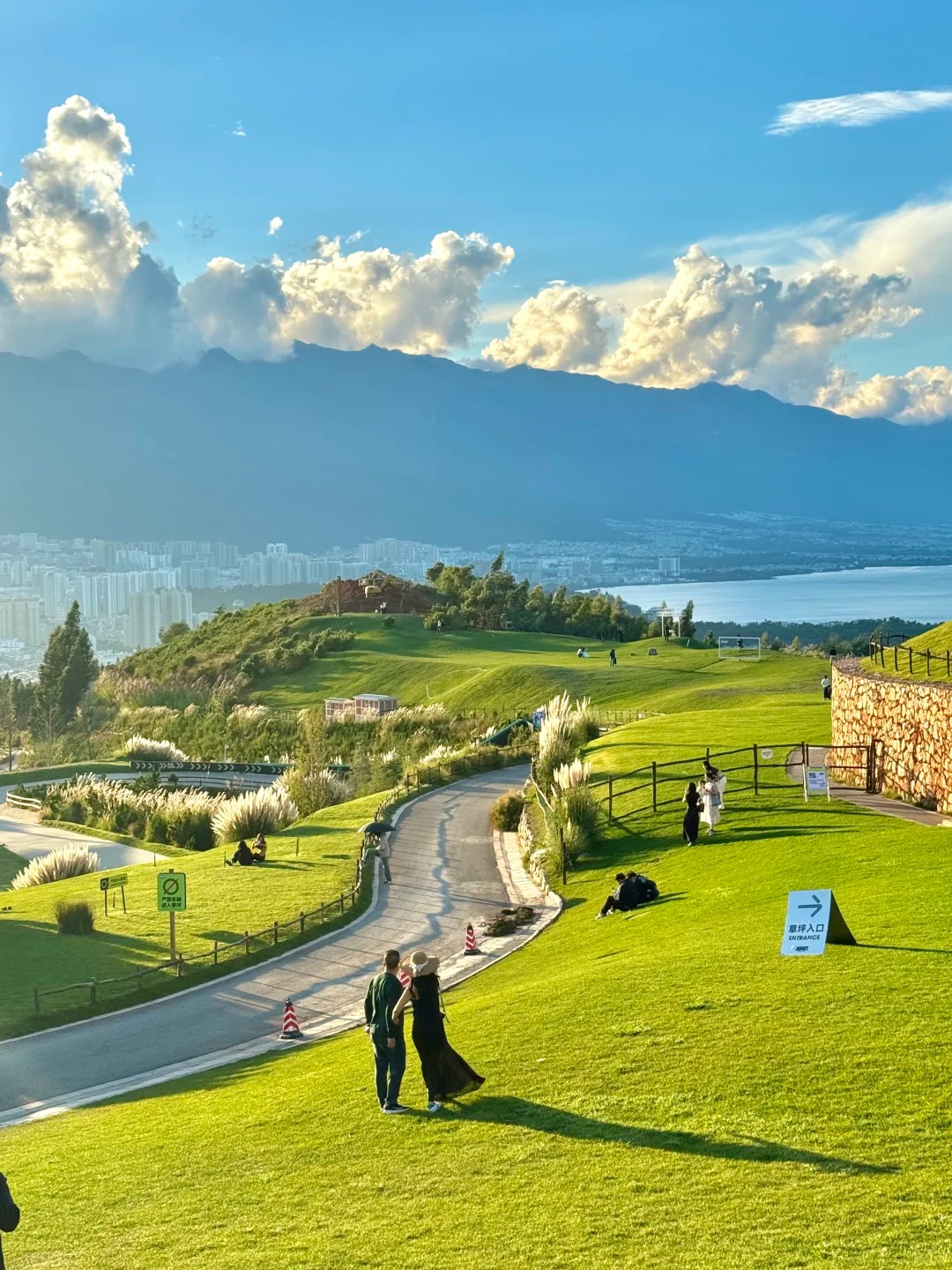
Yunnan
Yunnan sits in China’s southwest like a treasure you almost stumble into by accident. One minute you’re wandering through Dali’s old lanes with roasted corn scents wrapping around you, and the next you’re in Lijiang, watching morning mist cling to cobblestones while a rooster acts like the CEO of the town. Even the bus rides have personality—drivers honk at goats, and locals chat in dialects you can’t decode but somehow vibe with.
But here’s the real plot twist: Yunnan isn’t all chill strolls and pretty mountains. Many top spots sit at high altitude, and going in blind can knock you flat. Seasons change fast, roads stretch far, and renting a car or booking the right transport can literally save your trip. That’s why solid yunnan travel tips aren’t optional—they’re your lifeline for a smooth, safe, insanely fun adventure.
Best Time to Visit Yunnan: Weather, Seasons & Climate Tips
- Summer of Yunnan
- Autumn of Yunnan
- Winter of Yunnan
Regional Climate Differences Across Yunnan
The climate in Yunnan is nearly a patchwork quilt. Each city is sewn with its own temperament. Kunming, the City of Eternal Spring, feels cool in the morning, around 15–18 °C. Soft sunlight peeks through the light morning mist. Lijiang is elevated and cobblestone streets are often wrapped in fine mist in mornings. It heats quickly in the afternoon, rising 10–15 °C within hours. Dali feels softer, especially around Erhai Lake. The air smells of wildflowers and rice paddies.
Shangri-La sits above 3,000 meters. Frost forms in valleys some mornings, even in May. The high-altitude sun feels unusually strong. Xishuangbanna brings a tropical beat. Summer rains pour heavily, making it sticky and humid. Even 30 °C can feel hotter. Yunnan’s highlands are everywhere, and day-night temperature changes are dramatic. Once, I saw a rainbow over Yuanyang terraces after a short shower. Such bright images show why knowing the region’s climate is essential. These are clever tips for packing efficiently when traveling across such different areas.
Average Temperatures Across Major Yunnan Cities (°C)
(Monthly / Seasonal Reference Table for Travelers)
| City / Area | Jan | Mar | May | Jul | Sep | Nov | Yearly Range |
|---|---|---|---|---|---|---|---|
| Kunming (1,900m) | 8–15 | 10–18 | 14–22 | 17–25 | 15–23 | 10–17 | 8–25 |
| Lijiang (2,400m) | 4–13 | 6–17 | 10–22 | 13–24 | 11–22 | 6–16 | 4–24 |
| Dali (1,900m) | 5–15 | 7–18 | 12–22 | 16–25 | 14–22 | 8–17 | 5–25 |
| Shangri-La (3,200m) | −8–5 | −2–8 | 3–16 | 8–20 | 6–17 | −2–9 | −8–20 |
| Xishuangbanna (tropical) | 12–24 | 16–28 | 20–30 | 22–32 | 21–30 | 16–28 | 12–32 |
Recommended Months and Seasonal Highlights
Most visitors find spring (March–May) and autumn (September–November) ideal. Skies are clear, and temperatures remain mild. Flowers bloom and harvest colors cover the landscape. If you’re curious about experiencing Yunnan in full bloom and want seasonal travel ideas, check out our spring travel guide. June–August is the rainy season, and paths in Yuanyang and Shangri-La get slippery quickly. Shangri-La and northern Lijiang winters drop below 0°C. Snow makes the scenery beautiful but can affect transportation. Locals celebrate festivals like the Torch Festival in July or Water Splashing Festival in April. Attending these events can turn a routine visit into a memorable adventure.
I recall walking a trail near Shaxi in the rain. My feet slipped once, and my camera got wet. The fog and wet bamboo made the walk worth it. Remembering seasonal peculiarities and following a few tips for Yunnan trips prevents frustration. Planning ahead makes the adventure smoother and more enjoyable, avoiding unpleasant surprises.
Transportation Tips: Getting Around Yunnan Safely and Efficiently

Sunset of Yunnan
Public Transport and High-Speed Rail Tips
Traveling by bus in Yunnan can be surprisingly easy, but it has its quirks. High-speed trains connect Kunming, Dali, Lijiang, and outskirts of Shangri-La. Train travel is usually faster than buses. Foreigners must use passports to buy tickets. The booking system is strict, so Trip.com or AMaps apps work best. Sometimes, queueing at the station is faster than online reservations.
I once saw passengers miss a train because passports did not match reservations. Morning trains are less crowded. Evening trains are full of office workers returning home. Buses serve routes not covered by high-speed rail. Roads can be uneven, causing abrupt halts. Long-distance buses vary in size, holding 80–150 passengers, with different comfort levels. Following these yunnan travel tips makes trips less stressful and avoids last-minute scrambling.
Renting Cars, Hiring Drivers, or Joining Tours
Renting a car or a hired driver may be an enticing option to you in case you want to be flexible and will be travelling to remote places. Self-driving also allows freedom, but the mountain roads in Yunnan are also hazardous: the curves are too narrow, sometimes landslides occur, and the local motorists honk more than they brakes. A local driver would cost approximately 600-800/day although they are aware of the shortcuts and can safely navigate through difficult passes.
Tours vary in terms of group tours and individual guides to balance between convenience and knowledge. One day I went on a 3 day private climb about Yuanyang terraces, and it cost me more, but the guide saved me hours of time just taking me through local roads that are not marked on the maps. Costs, skill, and patience weighing can be used in choosing between the self-drive, driver, or tour. The following travel tips in Yunnan will help save time and keep you sane in a situation where distances between attractions have been misleading.
Last-Mile Transportation in Remote Areas
As soon as you get out of major towns, it becomes different. There are some villages such as Shaxi or other minor villages around Shangri-La, which do not have regular buses. The three-wheeled taxis or motor bikes become the standard mode of transportation and the charges are normally 10-30 yen per distance. The paltry lanes or terraces are usually reached on foot. I recall jumping out of a shared minivan, and then walking through a muddy path to a homestay - the mist, wet soil and smell of pine was enchanting despite the inconvenience. The key combination of short rides and walking it is important and these Yunnan itinerary tips will make sure that you arrive to hidden places without being stuck and paying more than you should.
Yunnan Travel Tips of High Altitude & Health: Staying Safe in Yunnan
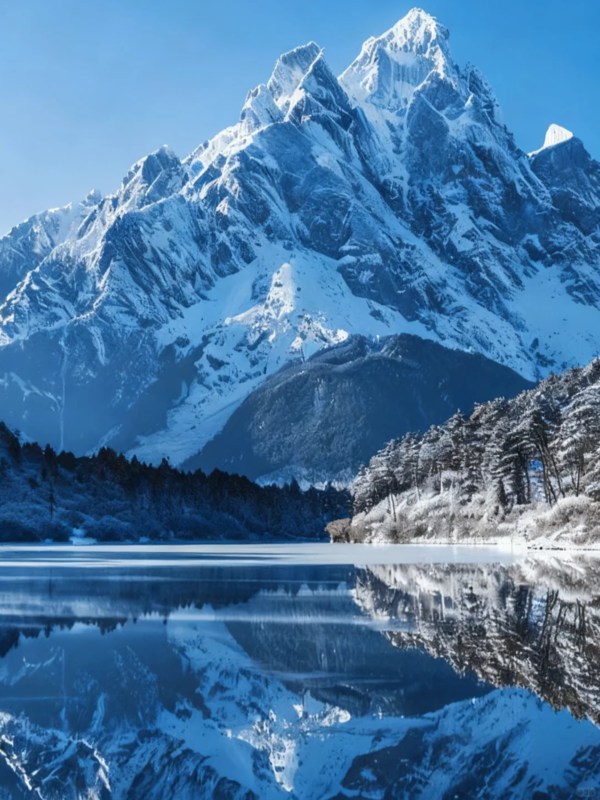
Jade Dragon Snow Mountain
Recognizing and Preventing Altitude Sickness
The highlands of Yunnan may strike you any time. Your head may ache or your lungs may be tight after even a casual wander in Shangri-La. The most common symptoms at an altitude above 3,000 meters include dizziness, nausea, or shortness of breath. I recall how I came to Lijiang and believed that a short stroll to the old town will be alright, only to feel shaky in the legs after five minutes, and with the fresh morning air every breath will be felt.
The most important is gradual acclimatization: first of all, you need to spend a day in a lower altitude city such as Lijiang or Dali, drink a lot of water, abstain alcohol, and use mild medications in case you are likely to get a headache. Complex carbs are present in the form of light meals that can make your body adapt. These yunnan traveling tips may help to transform a dangerous adventure into a controllable one, as you may witness the mountainous landscape without having to pay with a physical cost.
Altitude Levels & Safety Infrastructure of Major High-Altitude Attractions in Yunnan
| Attraction / Mountain | Elevation | Infrastructure Level | Cable Car / Transport | Notes for Travelers |
|---|---|---|---|---|
| Jade Dragon Snow Mountain (Yulong Xueshan) | 4,506 m at Glacier Park | Highly developed | ✔ Cable car to 4,500 m | Oxygen available on-site; very cold even in summer |
| Meili Snow Mountain (Kawagarbo Peak) | 6,740 m peak; viewpoints 3,200–4,000 m | Moderate | ✖ No cable car | Scenic viewpoints well-developed; trekking routes require caution |
| Shangri-La Pudacuo National Park | 3,500–4,100 m | Highly developed | ✔ Park buses | Boardwalks well-maintained; oxygen sold near entrances |
| Shika Snow Mountain (near Shangri-La) | 4,449 m | Developed | ✔ Cable car | Rapid altitude gain — acclimatize before visiting |
| Laojun Mountain | 3,800–4,200 m | Moderate | ✖ No cable car | Hiking-based; bring water and layers |
| Haba Snow Mountain Base Camp | 4,200+ m | Limited (trekking) | ✖ No cable car | For experienced trekkers only; guides recommended |
| Yubeng Village (Meili area) | 3,100 m | Basic | ✖ No direct transport | Mule paths & trekking only; stunning but physically demanding |
Emergency and Medical Preparedness
Nevertheless, it is good to know local support even in the cases of preparation. Most of the hospitals in Kunming and Lijiang employ English-speaking staff and smaller towns generally have a basic clinic or pharmacy that sells oxygen canisters. High altitude activities should be highly recommended to be covered by travel insurance.
During one of my hikes in the area around Meili Snow Mountain, one of my fellow travelers suddenly felt dizzy and weak, so we hastened to a local store that sells portable oxygen and phoned the host of the homestay that we were about to visit, who advised us to give the oxygen a chance since he felt a lot better. The possession of little oxygen bottles and contacts to hospitals rescued the situation. Essential tips to make sure that the altitude issues will not become a major setback include simple steps, such as packing a mini first-aid kit, verifying the insurance, and being familiar with emergency numbers, which will be useful in Yunnan trip.
Yunnan Travel Tips of Cultural & Local Etiquette
- Local Market in Yunnan
- Tie-dye of Yunnan
Visiting Ethnic Minority Villages
This is the place of dozens of ethnic groups with their own customs and rhythms in Yunnan. I was walking across a village in Naxi or Yi, but I observed that people in villages tend to stop to greet visitors and kids are attracted to the village staring inside. Photos are not all the time welcome, particularly of rites or old folks so it would be courtesy to inquire first or simply imitate the locals. If you want to explore more lively local streets and hidden corners, check out our detailed guide to Kunming’s attractions here.
Cheerful, humble outfits will make you fit in, and polite body language, such as slight nodding, or putting both hands on when accepting minor presents, can do wonders. I at one time presented a small snack to a very old villager, and she grinned and beckoned to me to come have a tea time. Such minor exchanges made a walk in a street a moment of human bonding. By having these nuances in mind, as shown in the yunnan travel tips, you are guaranteed of a very memorable visit and at the same time, a respectful one.
Festivals, Traditions, and Local Customs
Your experience can be changed by arranging your trip to a local festival. July Torch Festival, April Water Splashing Festival or Yi New Year involve music, dancing and colorful costumes. It is important not to participate in a dance, but watch it, and to take a dance object without permission or make a photo may offend local people. I also remember that I was walking into a small village of Yi on their New Year celebration; I walked with caution not to break any rituals, and I was finally asked to attend a traditional performance.
It is especially nice to learn several phrases or gestures in the local language and the negligence gifts are always well-received. By taking these tips into consideration when planning a trip to Yunnan, you can learn more about the culture and attend the festivals and traditions without accidentally offending anyone, thus making them a pleasant experience and a significant part of the trip, not a nightmare.
Yunnan Travel Tips of Accommodation: Where to Stay and How to Book
- Homestay of Yunnan
- Yunnan Hotel
Choosing the Right Accommodation Type
Yunnan offers options from backpacker hostels to luxury hotels. Your accommodation choice shapes your experience. I stayed in a small courtyard guesthouse in Lijiang for ¥180–250 per night. Foreigners were welcome, and the owner made morning tea with fresh herbs. Hostels are social and inexpensive, usually ¥50–120 per night. Boutique hotels in Dali or Shangri-La have local architecture and cost about ¥300–500 per night.
Luxury hotels, especially near Kunming, start at ¥600 and provide full facilities. Their glitz may lack connection to local life. Visitors should arrange ID or passport registration in advance, as most accommodations require it. Paying attention to these details, highlighted in yunnan travel tips, helps avoid surprises and ensures a comfortable stay.
Booking Tips and Seasonal Considerations
It is a strategic way of saving money and stress. Autumn and spring are high seasons: the cost of rooms may increase twice, and it is a good idea to book in advance on such platforms as Ctrip, Trip.com, or Agoda. I also once postponed in Yuanyang and the homestay that was available in Yuanyang was ¥400/night as compared to ¥220-250. Also do not book properties that are not reviewed and have a cancellation policy in place in case the weather or altitude makes a change.
It is sometimes more successful to call the property itself and request the best deals or verify the rooms that are friendly to foreigners. During low season months, there will be less traffic and the streets will be less busy, however in remote villages there might be a shortage of services. These tips to use on Yunnan trip will make sure that you choose the accommodation that will provide you with the right combination of comfort, authenticity, and affordability to sleep well and be at full energy to explore the world.
Yunnan Travel Tips of Food & Dining
- Yunnan Dishes
- Yunnan Food
Must-Try Local Dishes and Drinks in Yunnan Travel Tips
The Yunnan food is a sensual delight. As one strolls through a night market in Lijiang, one can taste the pure coal grilled mushrooms and the spices being cooked in the stall next door. In Dali, hot bowls of crossing-the-bridge noodles are coming with super thin layers of delicious chicken, silky rice noodles and green herbs floating in savory broth. The snacks of ethnic minorities such as skewered yak cheese or chili-fried bamboo shoots give a pleasing surprise in colour and texture with each bite.
I still recall having tried a mushroom stir-fry made of local wild mushrooms whose taste was so intense that it lingered like the mist in Yuanyang terraces. Tasting China is another aspect where sampling drinks, be it Pu’er tea or sweet rice wine can be enjoyed. With a couple of useful tips on yunnan traveling, you are able to travel these food adventures without skipping the sights or spending a lot more money on the tourism eating spots.
Food Safety and Eating Smart
The Yunnan street food is delicious yet there are safety issues. Go with merchants who have large crowds of people; people are often more likely to point to freshness than a guide. Unless an individual has the ability to boil tap water, it is better to consume bottled water, boiling point at homestays, or filtered water. I once made an attempt to eat something cold unknown and a slight stomach-ache made me realize that I should be cautious.
Keep little tubes of oral rehydration salts or probiotics in case you have sensitive stomachs. It can save much of the pain to eat breakfast or lunch at the right time so that it is not necessary to visit later restaurants or to consume half-cooked food. Along with these hints on Yunnan trip, you will be able to taste mushrooms, colorful noodles, and festive snacks without any troubles related to digestion and turn each meal into an attraction instead of a risk.
FAQ About Yunnan Travel Tips
Q: What is the best time to visit Yunnan?
Spring (March–May) and autumn (September–November) are widely recommended. Temperatures are mild, rain is lighter, and highland mornings often bring misty landscapes perfect for photography. Summer can be wet, especially in Xishuangbanna and Yuanyang, while winter is cold in Shangri-La or higher altitudes. Following basic yunnan travel tips helps avoid heavy rains and extreme chill, making sightseeing comfortable and reducing disruptions to transport or outdoor activities.
Q: How do I prevent altitude sickness in Yunnan?
Gradual acclimatization is key. Spend a day or two in lower-altitude towns like Kunming or Dali before heading to Shangri-La or Meili Snow Mountain. Stay hydrated, avoid alcohol, eat light carb-rich meals, and consider mild medications like acetazolamide if prone to headaches. Listening to your body and pacing hikes can prevent severe discomfort. Many yunnan travel tips emphasize slow ascent and preparation to enjoy highland vistas safely.
Q: Should I rent a car or join a tour?
It depends on your comfort with driving mountain roads. Renting gives flexibility but requires confidence on narrow curves and unpredictable local traffic. Hiring a driver or joining a private tour costs more (¥600–800/day) but reduces stress and navigates tricky routes efficiently. For first-time visitors, tours or local drivers often maximize safety and sightseeing. Using these tips for Yunnan trip helps balance cost, freedom, and convenience.
Q: Which apps are most useful for traveling in Yunnan Travel Tips?
Trip.com and AMaps are invaluable for booking trains, buses, and checking routes. Google Maps works for basic planning, but offline maps are recommended in remote areas. Translation apps help in villages where English is limited. For train or bus schedules, Trip.com is the most reliable, especially with foreign passports. These yunnan travel tips ensure smoother logistics and fewer last-minute headaches.
Q: What local dishes should I not miss?
Crossing-the-bridge noodles, wild mushroom stir-fries, and ethnic minority snacks like bamboo shoots or yak cheese are highlights. Pu’er tea and sweet rice wine complement meals perfectly. Visiting night markets in Lijiang or Dali provides the richest flavors. Paying attention to vendor cleanliness and peak local times helps avoid upset stomachs. Following yunnan travel tips ensures a safe, flavorful culinary journey.
Q: How can I stay connected with mobile data in Yunnan?
SIM cards from China Unicom or China Mobile work in most cities, with plans offering 4G coverage and occasional 5G in Kunming and Lijiang. Roaming packages from your home carrier can be expensive. Download offline maps before venturing into remote towns. Many hostels provide Wi-Fi, but speed varies. These practical yunnan travel tips keep you reachable and able to navigate confidently.
Q: What cultural etiquette should I follow in ethnic villages?
Always ask before taking photos, avoid interfering in ceremonies, and dress modestly. Small gestures, like nodding or handing items with both hands, are appreciated. Learning a few words of the local language shows respect. Being observant and patient earns goodwill from villagers. Applying these tips for Yunnan trip allows meaningful interactions without causing offense, making visits more rewarding.
Q: How much should I budget per day in Yunnan?
Budget travelers can manage around ¥200–300/day including hostels, street food, and buses. Mid-range budgets fall around ¥400–700/day, covering boutique hotels, occasional private drivers, and meals at local restaurants. Luxury stays can reach ¥1,000+/day, especially in Shangri-La or during peak seasons. Factoring transport, meals, and entry fees with yunnan travel tips helps plan realistically and avoid overspending.
